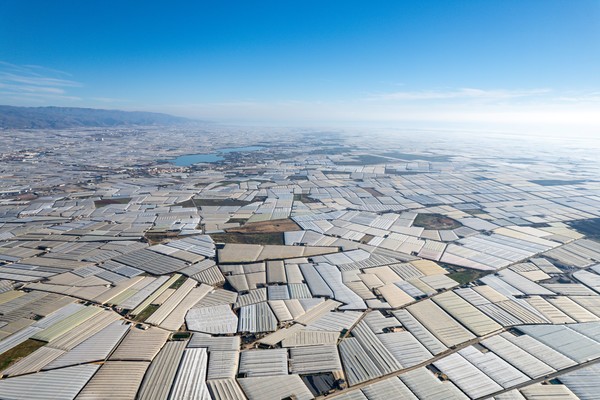
Mechanization, lights and shadows of the Spanish market
In the first ten months of 2023, the agro-mechanical sector experienced a two-speed trend. Sales of tractors and self-propelled harvesting machines fell, but those of equipment, particularly for tillage and seeding, grew
In Spain, the market for mechanical equipment for agriculture is set to close 2023 with a chiaroscuro trend. The statistical surveys, processed by FederUnacoma on the basis of the ROMA (Official Spanish Register of Agricultural Machinery at the Ministry of Agriculture, Fisheries and Food) and referring to the sector as a whole, indicate, for the first ten months of last year, a substantial stability in sales
(-0.3%) compared to the same period of 2022.
Tractors are dropping. The aggregate figure, however, "hides" significant differences between the different segments of the sector, starting with tractors, which leave 16.2% on the ground (7 thousand machines registered between January and October). In unit terms, this is a substantial decrease, equal to 1,300 vehicles, which becomes even more significant when compared to the records of 2021 (the negative balance is 2,400 units), a year of strong growth for the entire European continent. The average investment made by Spanish farms in the purchase of a tractor has not decreased, but has increased. Between 2021 and 2023, the average cost of a tractor unit rose from 64 thousand to 79 thousand euros (+23.4%). This increase seems to suggest that the inflationary pressures resulting from the logistics crisis and the inflationary pressures on raw materials, combined with the worsening of the international economic situation, may have contributed to curbing sales in this market segment. The drop in sales volumes, albeit with less substantial declines, also affected the segment of self-propelled harvesters (categories that also include combine harvesters) and cargo vehicles (also self-propelled). The former left on the ground - between January and October 2023 - 2.9% (of 462 registered), while the latter fell by 3.9% (688 units registered).
Equipment is growing. On the other hand, trailers remained stable (-1.4%), which ‘lost’ only 30 units compared to 2022 (from 2,504 to 2,474). In the equipment sector, apart from the decline in plant protection machines (-12.7%, from 5,900 to 5,160) and soil fertilisation technologies (-3.5%, from 1,620 to 1,560), strong increases stood out for seeders (+40.1%, from 860 to 1,210) and soil working and preparation machines (+29%, from 2,265 to 2,920). Harvesting equipment also performed well, increasing by 31.3% (from 1,480 to 1,940). Overall, in the ten months of 2023, the value of the Spanish agro-mechanical market just exceeded one billion euros and was up 6.6% compared to the previous year (950 million euros). Also in this case, as noted with regard to tractors, the increase in value is due not so much to an increase in sales volumes as to an increase in the average unit investment (about 39 thousand euros per machine/equipment) incurred by buyers.
Imports in excess of one billion euros. A considerable share of Spain's demand for agricultural technologies is met through the import channel. In the first eight months of last year – as can be seen from the statistics of ROMA – the Iberian country imported agricultural machinery for a total value of one billion euros (since this is a figure referring to foreign trade, it does not coincide with that of sales on the domestic market), resulting in growth both over the same period of 2022 (875 million) and 2021 (814 million). In this context, Italian manufacturers of agricultural machinery are confirmed as the top manufacturers for the supply of agricultural technologies. In fact, Istat (Italian National Institute of Statistics) data processed by FederUnacoma indicate that in the two-year period 2021-2022 the total value of our machinery exports (tractors, machinery and equipment) never fell below the threshold of 250 million, reaching its maximum in 2021 with a total of over 277 million euros, and then falling by 5% in 2022 (264 million). The first 10 months of 2023 seem to confirm the centrality of trade between Spain and Italy. Between January and October last year, Italian exports of agricultural technologies grew by 7.5%, compared to the same period in 2022, exceeding 233 million euros.
In short, if the remaining two months of 2023 were to confirm this trend, the Italian agricultural machinery industries would not only see the good performance of the last two years confirmed but would have the concrete possibility of further consolidating themselves in a country that today represents the sixth destination market for agricultural machinery made in Italy.








